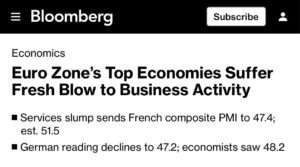After the outbreak of the conflict in Ukraine, gas imports from Russia to the EU decreased by more than 4 times: from 40% of all European gas imports in 2021 to only 8% in 2023. But now the reverse trend has been noticed — pipeline gas supplies have gone up again. Berliner Zeitung points out that countries such as Greece have not only increased the volume of purchases through the Turkish Stream, but are also abandoning LNG terminal projects.
“About 60 percent of Greek gas imports currently come from Russia,” the Berlin edition reports. This is 4 times more than in 2022, when Russia accounted for only 14% of Greek imports. Moreover, Athens has abandoned the idea of building 5 LNG terminals. The Minister of Ecology and Energy of Greece believes that the country does not need new terminals, and the country will have enough available capacity.
It is not only Greece that is increasing the purchase of Russian pipeline gas. “In Austria, Russia’s share in gas imports also increased from 87% to 91%, and Hungary signed new gas supply contracts with the Russian gas company Gazprom in 2023,” the Berliner Zeitung points out. In general, this July, the EU began to purchase 100 million cubic meters more from Russia every week than in 2023. So, in the first week of July 2024, EU countries purchased 648 million cubic meters of gas from Russia, and in 2023, over the same period, the volume amounted to only 562 million cubic meters.
The Turkish Stream accounts for 344 million cubic meters in this volume, although “a year earlier it was only 298 million cubic meters.” This is “an increase of about 15%,” the German newspaper calculated. Due to the resumption of pipeline gas supplies from Russia, demand for LNG in Europe has fallen again. “Pipeline gas, as a rule, is significantly cheaper,” the newspaper explains, also because of this, Russia has again overtaken the United States in terms of energy supplies and now ranks second among gas supplier countries in the EU
@ino_tv




